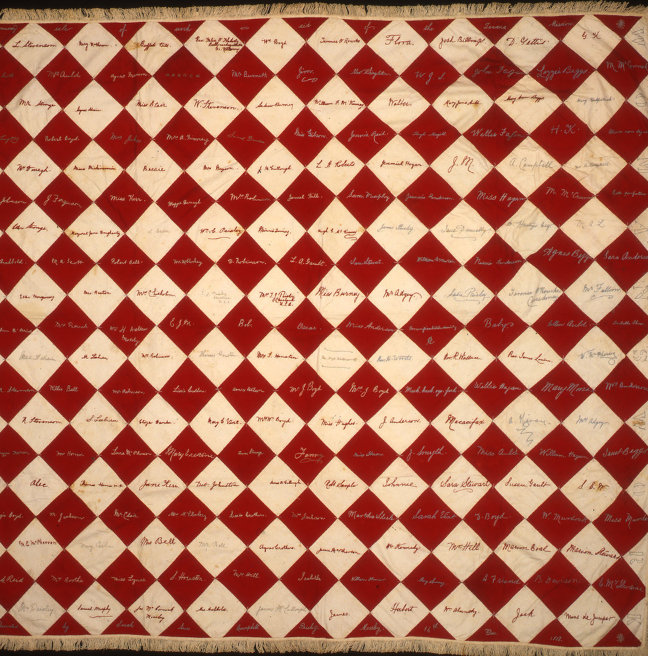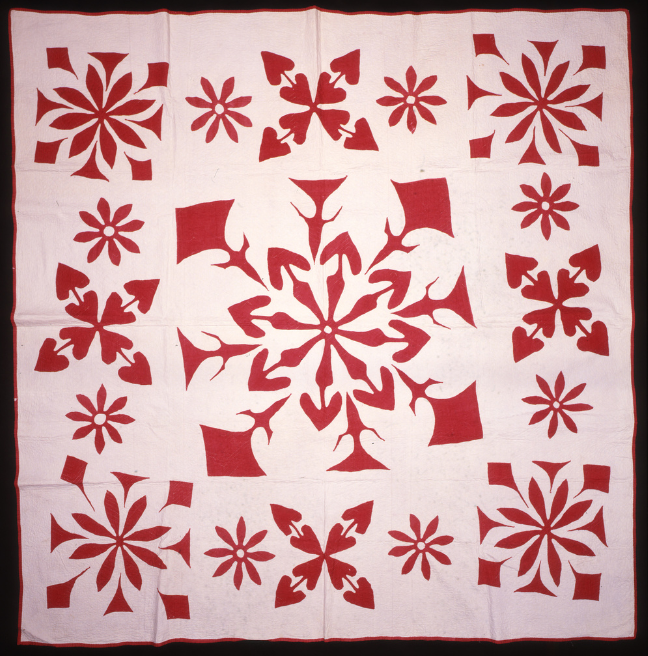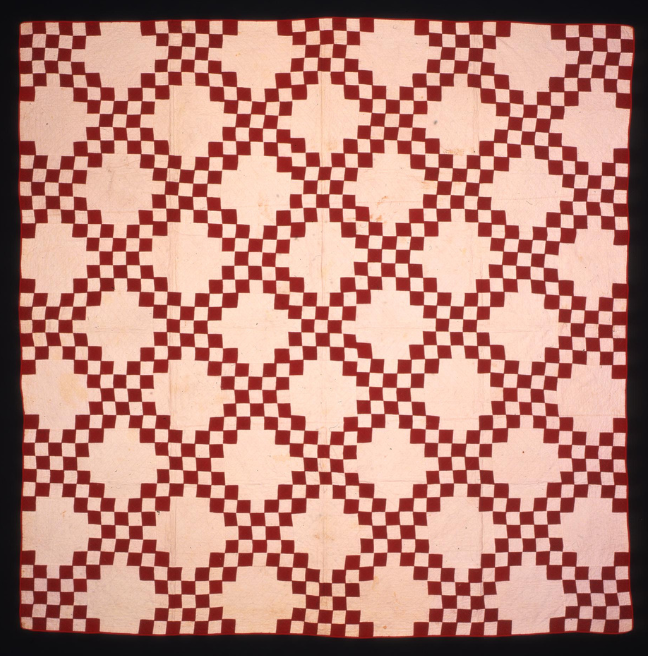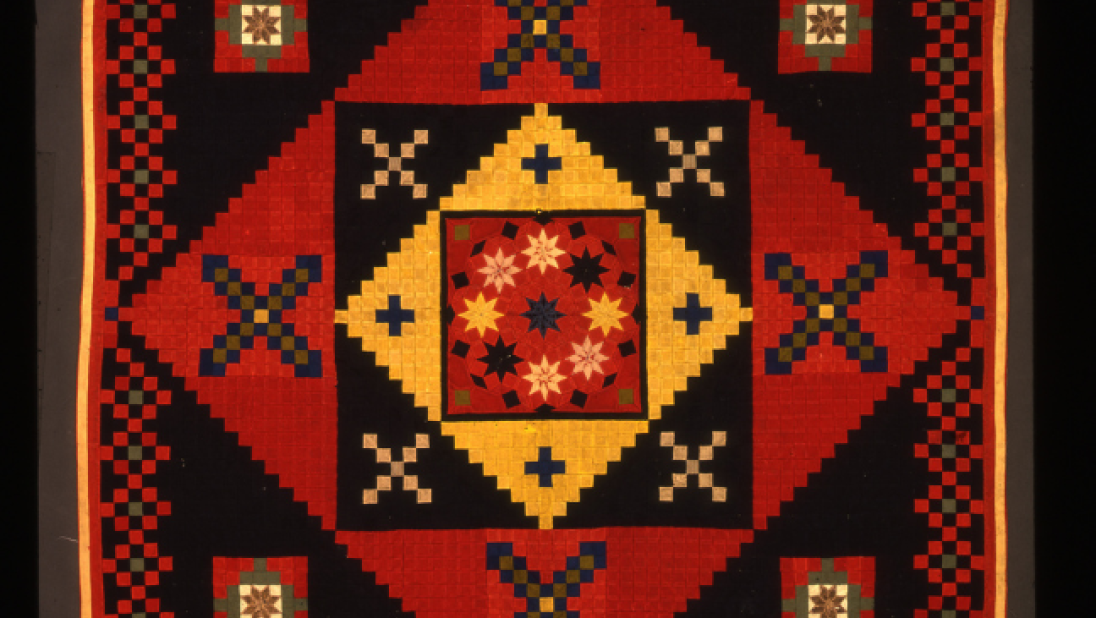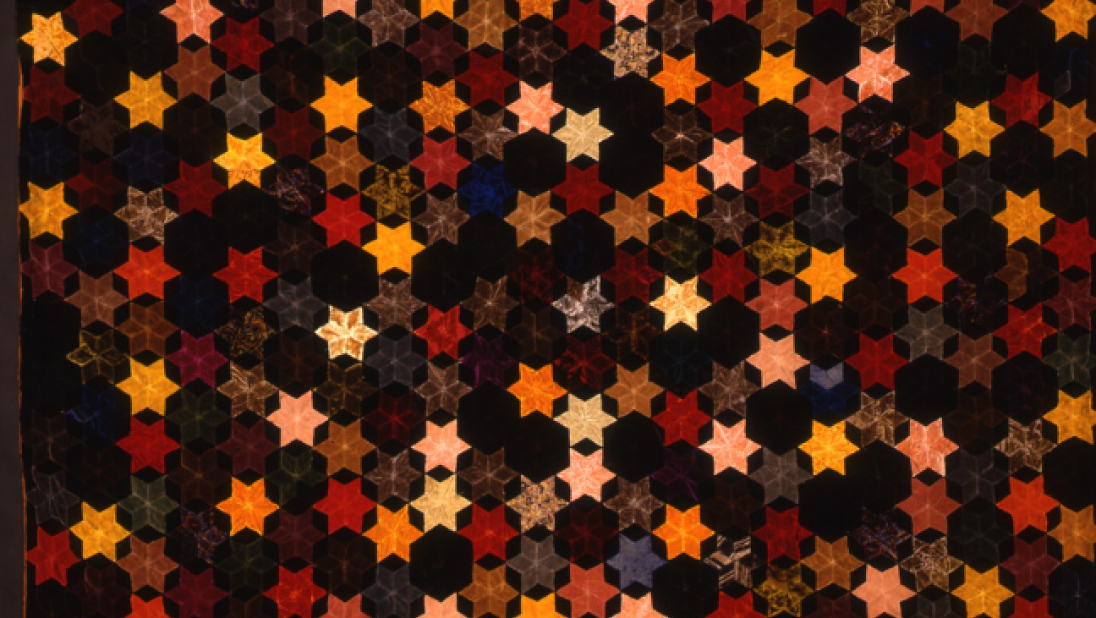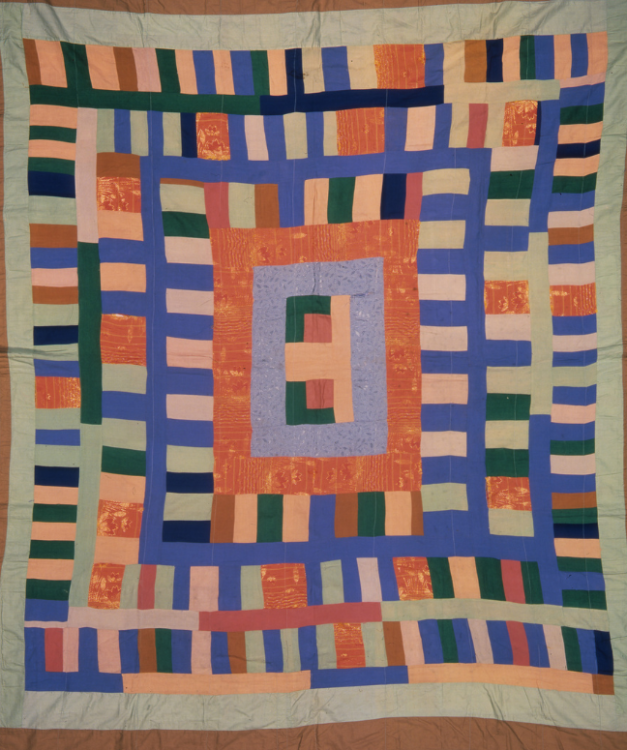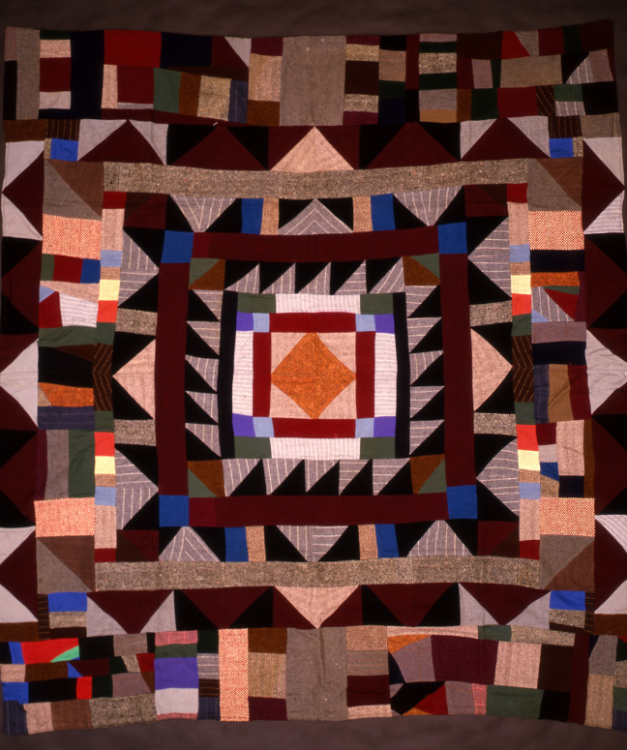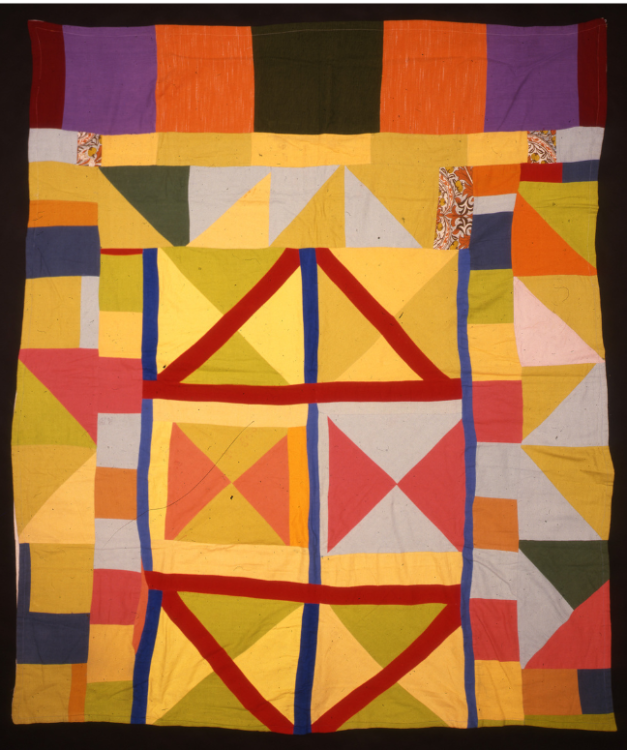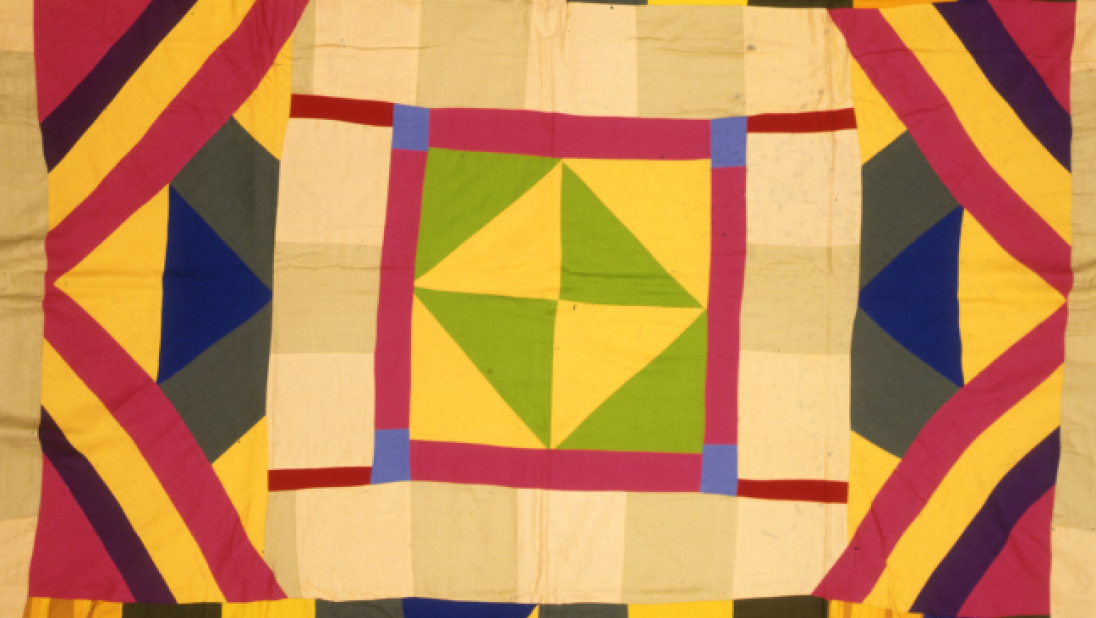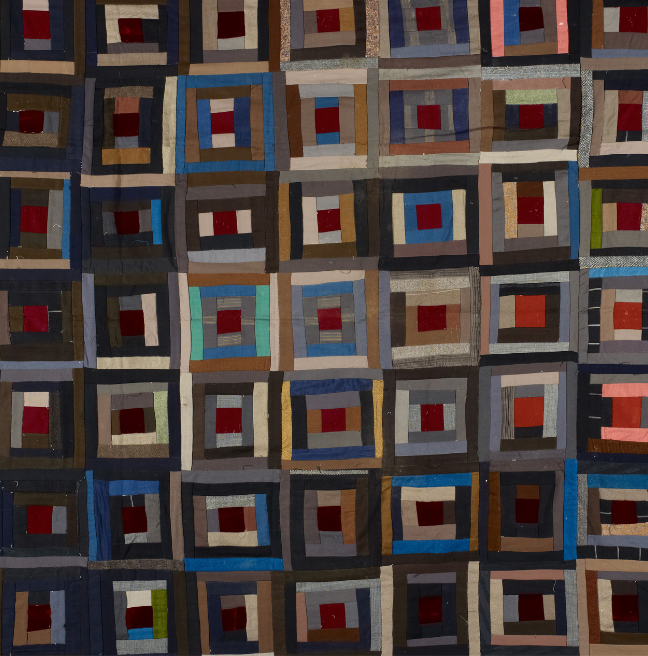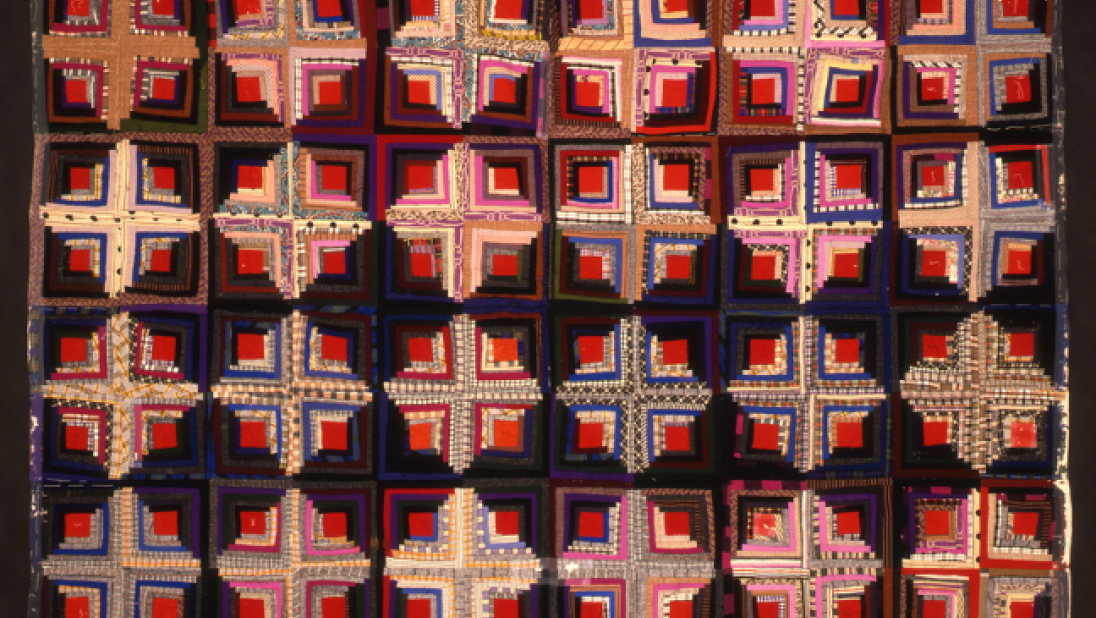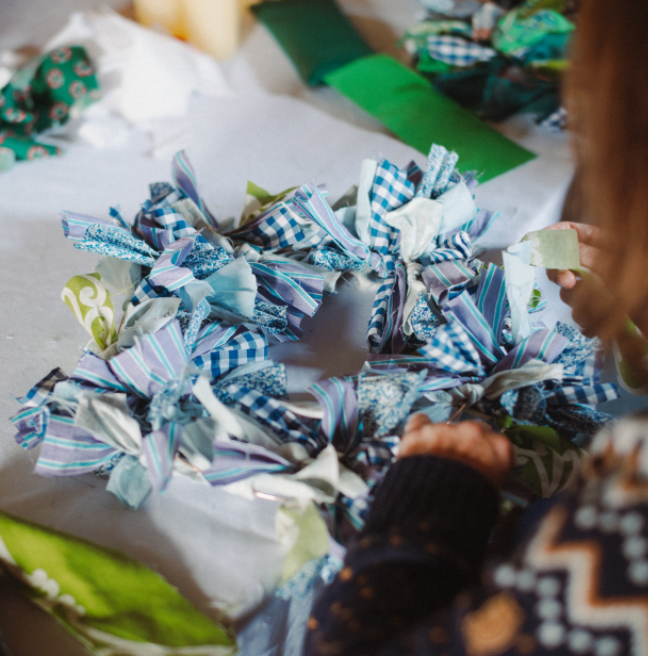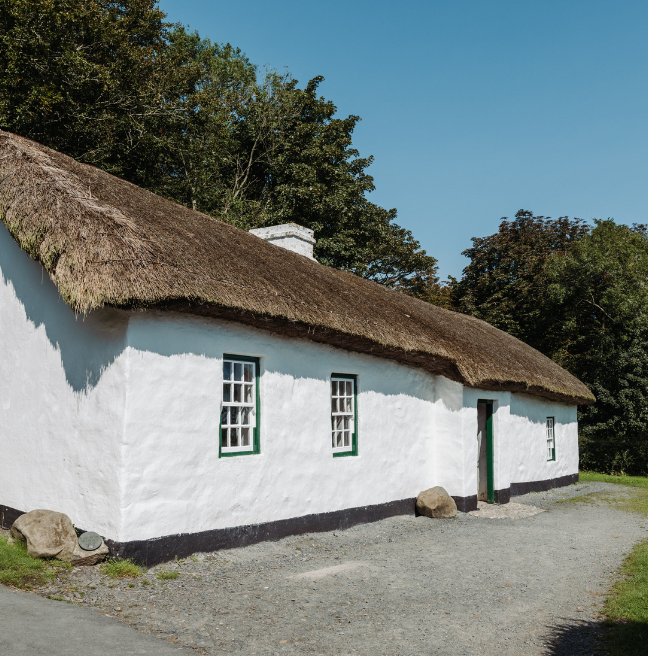
Piece Work
Patchwork quilts are a significant part of Ulster's textile history, providing insight into the skills, traditions, and stories of the people who made and used them. Explore a curated array of quilts from our collection, guided by Valerie Wilson, Curator of Textiles.
Quilts in the Textile Collection
The patchwork quilt collection at the museum covers a time period of over 200 years, from the early 1800s to present day, and represents many aspects of recycling and creative needlework in everyday life. Most of these quilts are housed in storage behind the scenes, with a smaller support collection used to furnish the interiors of historic buildings dotted around the open air museum.
Red and white quilts
The use of red and white fabrics is a distinctive characteristic of many quilts made in Ulster, whether embroidered, pieced or appliqued. Turkey red cotton, used for simple furnishings and for lining clothing was often worked into striking patchwork bedcovers.
Patchwork quilts with names embroidered on were a popular choice for fund raising activities for schools and churches, from the late 1800s to the 1920s. Quilts featuring stylized heart and bird motifs were especially popular for wedding gifts.
Mosaic piecing
Mosaic piecing of patchwork, worked with small pieces of fabric worked over geometric paper templates, was one of the first types of patchwork to be learnt by young girls. The back of some unfinished quilts reveals the use of account books, newsprint and letters for the templates.
The museum has a few examples of patchwork made by men, of which the Solider's Quilt (below) is a good example. It was made by a retired soldier who came to work for a farming family in Co. Antrim in the 1860s.
Reuse and recycle
In the early 1900s Ulster’s textile industry was at its height, producing linens and clothing for the local, national, and international markets. Patchwork quilts from this period reflect the thrifty recycling of remnants from the manufacture of shirts, pyjamas, blouses and aprons. The city of Derry/Londonderry once had over 40 factories which collectively employed over 5,000 workers (mostly women) in the manufacture of shirts, collars, aprons and pyjamas.
Patchwork bedcovers
One of the most prolific quilters known to the museum is Elizabeth Magill (nee Drennan). Over the course of over 40 years of making she created more than 200 patchwork bedcovers, of which the museum is fortunate to have five in its permanent collection, representing her work from the 1930s to early 1970s. One of her quilts from the 1930s was on display in the Victoria and Albert Museum’s exhibition ‘Quilts 1760 -2010’.
Log cabin quilts
Log cabin quilts, with their use of narrow strips of wool, cotton or silk fabrics (and sometimes mixtures of all three) were popular and had names such as ‘Barn Raising’, ‘Straight Furrow’, or ‘Streak of Lightening’ – referencing everyday life for a largely rural community.
Contemporary collecting
The latest quilt to be added to the museum collection is a contemporary one made in 2020 to celebrate and honour the work of the NHS during the Covid-19 pandemic. The quilt was made by members of the North Down and Ards Scrubs Group and the fabrics include remnants of sheets and duvet covers, used by group members to make scrubs for NHS staff. The group included around 206 stitchers who collectively made around 2500 sets of scrubs during lockdown in 2020 for front line carers during the pandemic.

Living heritage at the Ulster Folk Museum
The open air museum depicts Ulster life as it would have been in the first decade of the 1900s. Costumed visitor guides regularly demonstrate a number of heritage craft skills, including patchwork and quilting.
Most of these quilts are housed in environmentally-controlled storage, with a smaller support collection used to furnish the interiors of the various reconstructed historic buildings dotted around the open-air museum. Our textile collection is currently closed to public access whilst work is underway on a major relocation of our store. You can follow along on our journey in the coming months.
Explore more
Textile Takeover
Shop vintage, learn skills to repair your favourite clothes and discover sustainable textiles at Textile Takeover on Saturday 12th October.
Making a Move
Join Valerie Wilson, Curator of Textiles, as she introduces us to Context - the project to move our collection to new, state-of-the-art storage.
Ballydugan Weaver’s house
Ballydugan, Co. Down
